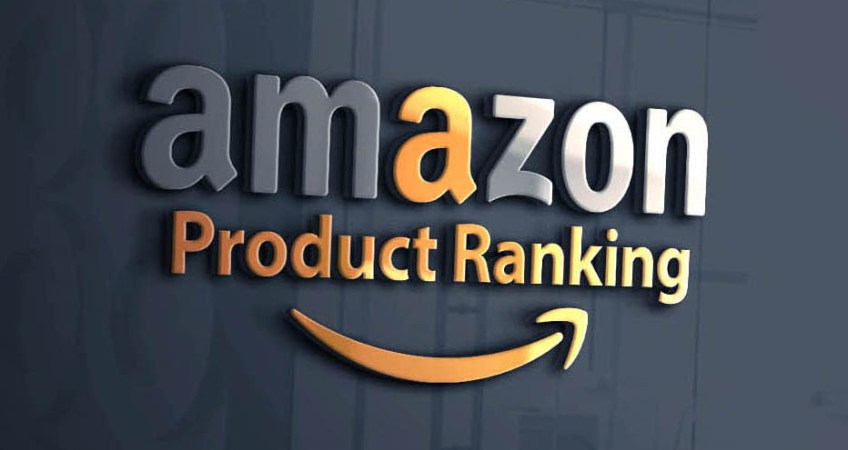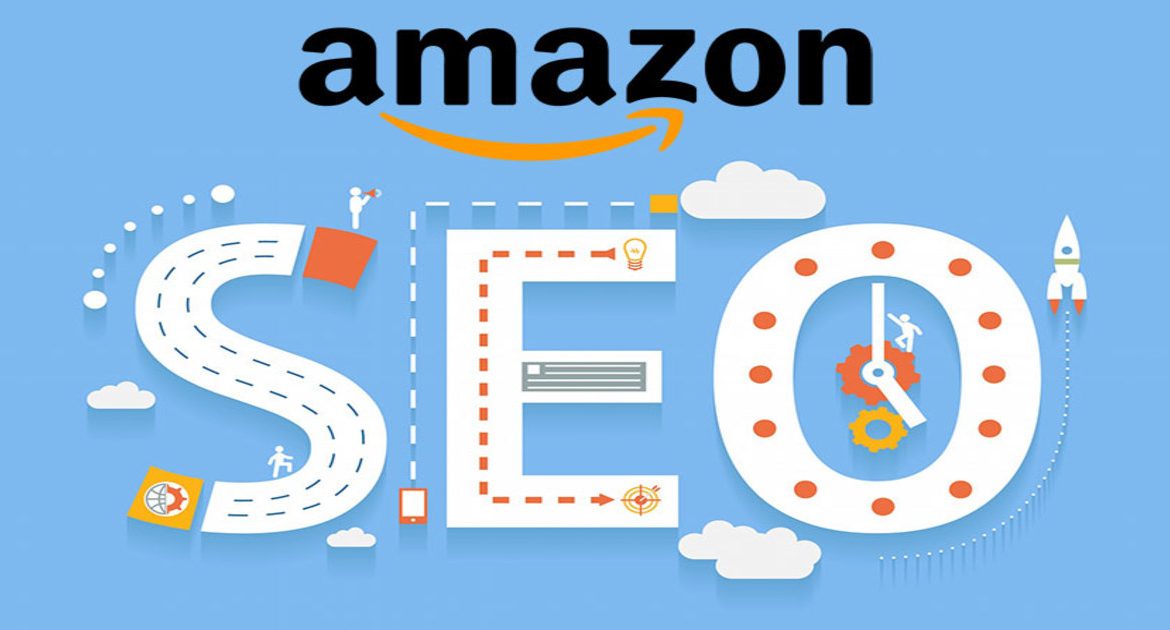Here in this article, we are going to analyze, discuss and give tips and recommendations on how you can improve your product’s A9 ranking using these three areas of focus.
There are 3 main factors that determine the ranking position the A9 algorithm places your merchandise: product relevance, conversion rate, and product authority.
Although a simple keyword search on Amazon will reveal a long list of products across scores of pages, it is those products listed on the first 3 pages that typically lead to conversions and successful sales.
Being the global eCommerce leader, Amazon is constantly striving to satisfy its 80-million strong membership by bringing only the very best shopping experience to them.
The online commerce behemoth uses its A9 algorithm to search and recommend the right products to its worldwide customer base so as to make their purchase process easier and much more seamless.
We, therefore, must always adhere to Amazon’s ranking rules and guidelines even as we help you to push your merchandise to the top of A9 ranking.
STEP #1: HOW TO THINK LIKE AMAZON A9

Amazon SEO is all about enhancing your product’s purchase likelihood because, unlike on Google, the only goal here is ensuring customers can buy your product.
What this means, therefore, is that to become an Amazon SEO expert, understanding how Amazon’s search algorithm, the A9, works is key.
While Amazon users want to buy and sellers are here to sell, Amazon itself is keen on scoring sales commissions.
The A9 algorithm, therefore, sorts product search results according to their purchase likelihood. For this to happen, two groups of factors are taken into account:
– Relevance Factors: How well does your product match a user’s search query? Product relevance is mostly calculated using keyword usage and positioning.
– Performance Factors: How popular or successful with customers has your product been so far? Key metrics used here include CTR (click-through rate), conversion rate, and overall sales numbers.
STEP #2: ENHANCE YOUR PRODUCT PAGE’S RELEVANCE
Your products must always be relevant to your customers’ search terms for you to rank highly.
That is just basic. Below are 7 fundamental aspects to be keen on here:
1) Title
As far as title optimization is concerned, Amazon and Google are quite different from each other.
While Google is okay with simply-designed titles, Amazon is concerned more about keywords.
In recent times, Amazon had no problem with as many keywords as space allows for a product’s title.
However, it is important to note that the company has begun the process of reforming and standardizing its product title creation rules.
Today, Amazon is recommending that your title contain such elements as:
- – Brand- Product Line
- – Material or Key Feature
- – Product Type
- – Color (don’t include it if your product doesn’t come in multiple colors)
- – Size (don’t list it if your product’s size isn’t a relevant detail)
- – Packaging/Quantity.
- On the other hand, don’t include the following in your product’s title:
- – Price and Quantity
- – Use of All-Caps
- – Seller Information
- – Promotional or “Salesy” Messages
- – Suggestive Commentary (like best seller)
- – Symbols such as #, ?, $, !
Bonus Tip:
The secret to coming up with an effective title lies in your ordering of these elements, along with one extra major ranking factor like additional target keywords.
Placing the most relevant keywords first also has both algorithmic and practical benefits.
The number of users who click on search results only within the first page is estimated at a whopping 97%!
What this means is that shoppers not only hope to find exactly what they want to buy but also want to achieve this as fast as possible.
They, therefore, largely tend to provide as many details as possible in their search queries right from the very beginning.
These longer search queries account for up to 70% of searches and are referred to as long-tail keywords although they are more like phrases.
Our Recommendation:
Create a list of your most preferred keywords than strategically place them before various character breakpoints in the product title.
What about your brand name? Should you use it in the title? There is no yes or no answer here.
Just test this with your own products and see what works best.
Bonus Tip:
Don’t overstuff your product title with keywords. Although this may have been a common strategy in the past, today both Amazon and shoppers are wiser and it is no longer an effective way of improving your ranking.
In fact, keyword stuffing here may lead to a negative impact on your sales. Fortunately, we have numerous tools at our disposal to help us determine what works and what doesn’t add any value.
2) Bullet Points
Not only is it essential that you appropriately describe key points here, Amazon also doesn’t allow products without proper descriptions in the BuyBox.
Bullet points may not directly have any impact on your A9 ranking but they can greatly influence your product’s relevance and conversion rate.
Listing bullets are an important opportunity to represent your product’s features and benefits.
Again, just like in the product title, the words you use in the bullets are indexed by the A9 algorithm and used for identifying your product during a search.
However, experience has shown us that terms used in the bullets don’t have the same weight as those used in the title.
Our Recommendation:
Test the copy and order of your bullet points and see what works best for your situation. We have occasionally seen higher conversions resulting from different combinations of terms.
- Highlight the top 5 pros you want customers to see when considering to buy your product (warranty information, dimensions, age appropriateness, etc.).
- All your bullet points should start with a capital letter – List them down in fragments and don’t include any ending punctuation
- Write all numbers in numerical format.
- Use semicolons to separate phrases within one bullet point
- Spell out any measurements (quarts, feet, inches, etc.).
- Avoid writing vague statements (be very specific with product features and attributes).
- Don’t use any company-specific information (this section is meant for product features only).
- Don’t include any pricing or promotional information here.
- No shipping or company details (Amazon prohibits including any seller/company/shipping information).
3) Product Description
Your product’s description is an extension of the function discussed above.
So long as you have included a keyword in the product listing, your product will appear in A9 search results.
Though product description has no direct effect on ranking, it is indexed and can thus impact your product’s visibility. In addition, a well-written description with a strong call-to-action is capable of having a major impact on conversions.
Bonus Tip:
Make good use of simple HTML. Personally, I prefer “Word to Clean HTML” as my #1 tool for converting text to HTML. But for those of us who aren’t very good at copy-writing, you can outsource this task.
A product description should not include:
- – Seller’s name
- – Email address
- – Website URL
- – Company-specific information
- – Details about a different product that you sell
- – Promo or “salesy” language like SALE, free shipping, etc.
4) Brand and Manufacturer
Some consumers do go for specific brands when searching. If the consumer includes the manufacturing number in their search query, therefore, then you need to also add it in your product title.
5) Product Specifications
This is a different thing from functions. It is important to list your product’s technical and physical details like size, color, weight, technical specifications, production date, etc.
6) Category and Sub-Category
There are also those customers who search for products using categories.
Amazon also displays its A9 search results according to category. Placing your merchandise under the correct category is, therefore, very important.
7) Different Search Terms
Amazon provides for 5 search term fields so it is better if you enter the most appropriate keywords you can think of.
Don’t repeat words. Rather, use synonyms or alternative spellings. Despite the fact that these terms aren’t visible to users, Amazon A9 still indexes them just like those in the bullets and product descriptions and similar to the no-longer-used meta-keywords HTML tags.
8) URL
This is a way for the Amazon A9 algorithm to determine how relevant certain listings and searches are.
Bonus Tip:
Create a URL query for your product page — keyword equals your product + keyword — and includes the resultant code at the back of your product’s URL.
Then shorten the code using a service like bit.ly and come up with a URL that can be shared for this particular link before driving traffic to it.
If there is a sales record arising from this link, A9 will determine those visitors who have searched your products and target them to your keywords.
Unique Content
For Amazon purposes, it doesn’t really matter if your listing bears the exact same title, bullet points, product description and/or images as other websites.
What Amazon is concerned about is if these details help convert searchers into buyers.
STEP #3: STRIVE TO ENHANCE YOUR CONVERSION RATE

The higher your conversion rate, the higher the likelihood for Amazon to recommend your merchandise to other consumers.
A high conversion rate is a strong indication that your product has a higher probability of satisfying customers, which in turn brings a higher interest and further conversions to the Amazon platform itself.
Below are 7 key points to note here:
1) Sales
Products ranking highly in the number of sales always come on the first search pages.
A sales king, therefore, has a higher sales velocity than their competition. The first step toward generating sales involves driving both internal and external traffic to your product’s Amazon listing.
You could also apply a launch service to generate a natural spike in sales so as to move your product higher in ranking.
Our Recommendation:
Use tools such as AMZDiscover to capture the email addresses of your reviewers for each product listing, and then promote your items to those potential customers.
2) Customer Reviews
Your product’s total number of reviews is another critical factor.
Most customers will want to know what previous users/buyers of a product had to say about it.
Getting as many positive reviews as possible should, therefore, be your goal. You can use email to target customers and recommend your products to them to gain more sales and reviews.
Reviews still remain a valuable factor of Amazon SEO since they do have a major influence on conversion rates.
Products with good ratings (typically above 4-star reviews) automatically rise to the top of Amazon SERPs.
However, once a customer clicks through to your product’s listing page, they will skim through any negative reviews before deciding if to buy or not.
Being fully aware of the importance of reviews when it comes to its shoppers’ final purchase decisions, Amazon is very serious on cracking down on fake reviews (where some sellers pay people to write fake positive reviews) and completely eliminating them from its platform.
You can improve on your positive reviews tally by:
- – Building an email list through your landing page
- – Directly contacting reviewers using the AMZDiscover or Cashbackbase platform
- – Serve your customer well and remind them to leave a review after buying
- – Take advantage of forums like Facebook, etc.
Bonus Tip:
You can handle/get rid of negative reviews by making sure that you always respond to your customers’ complaints quickly.
If you don’t handle discontent on time, you may end up scaring away other potential customers. You can:
- Offer refunds for defective products or ship a replacement.
- Make your customers aware that a product review shouldn’t include shipping feedback if you are using FBA.
- Correct any customer that uses a product in the wrong way leading to discontentment (for instance, failing to check washing instructions properly) and then include the instructions to your product listing so as to avoid similar instances in the future.
- Responding and handling negative reviews from your customers shows that you are mindful of your customers’ satisfaction with the use of your products.
Quick Recommendation:
When reaching out to my reviewers, my favorite tool is AMZFinder. It helps send out review request emails to customers to get more Amazon reviews and also monitor all of the reviews.
you can always get alerts of any negative reviews and know how to handle them in a quick way to improve your store reputation.
3) Questions & Answers
It may not be absolutely clear how these impact on A9 ranking but they are important when related to listings due to their ability to influence the conversion rate.
Not answering your customers’ questions may suggest that you aren’t familiar with the product you are selling, or that you don’t care.
4) Product Image
Your product listing’s image size and quality are also a critical factor. Using a large clear image boosts your listing.
In fact, a cross-section of Amazon shoppers just looks at the title and the product picture.
Amazon SEO Tips Regarding Product Photos:
- Include a minimum of a few images and use a decent resolution of at least 1000×1000 pixels to enable zooming
- Ensure your product picture is against a white background
- If you have a private label on your product, ensure your brand can be seen clearly in at least one of the product photos
- Use some of the photos to demonstrate your product’s benefits/uses
Bonus Tip:
Take advantage of all the 9 image options available. Add a photo or two of your products in use.
Demonstrate how easy/convenient it is to use/store the product. If your product’s benefits can’t be cant depicted in the photos, add some writing on one/some of them to help your shoppers get to know it better.
5) Pricing
Setting a competitive price for your product doesn’t necessarily mean that you engage in a price war with your competitors.
Pricing is one of the factors that determine whether you can win the BuyBox or not. Often, the lowest price isn’t always your best option because many shoppers still connect higher prices with higher quality.
It is always a nice idea to offer your customers free shipping via Prime (by doing FBA) or using a coupon code. An additional perk of Prime doesn’t just mean that the shipping is free but fast.
With most deliveries taking 1-2 days and quite a large number of same-day deliveries near Amazon warehouses, shoppers prefer buying via Prime/FBA, another prime example (no pun intended) of the fact that Amazon SEO is more than just listing.
6) Variant Products
While some sellers prefer creating multiple listings for different attributes of the same product, this isn’t actually a good idea.
Instead, you can use Amazon’s multi-attribute variant function to put up just one listing and direct users to just one specific page.
Indeed, this has been shown to improve both the number of buyers and reviews.
Again, this option ensures that all attributes of your product are displayed on a single product page so that your buyers don’t have to switch pages in order to make their purchase decision.
7) Customer Stay Time and Bounce Rate
If a buyer stays on your product page for a long time, this greatly boosts the conversion rate. Customers have a higher likelihood of buying products where their stay time is longer. You need to, therefore, rethink your strategy if you notice that you have a high bounce rate.
STEP #4: PAY CLOSE ATTENTION TO YOUR PRODUCT AUTHORITY

Apart from your total number of sales, feedback from customers is another key factor that affects your overall product authority.
If most customers who buy your products eventually return them and/or leave negative feedback, then your product authority will obviously drop.
1) FBA
Amazon gives higher priority to FBA-shipped products. Using the FBA service, therefore, raises your product keyword search authority and subsequently gives you an opportunity to go up the Amazon A9 ranks.
2) Order Defect Rate
This is another factor that is also calculated and taken into account by the Amazon A9 search algorithm.
There are 3 aspects that are mainly included in order defect rate including performance: negative reviews, A-to-Z claims and chargebacks.
3) Negative Feedback Rate
Feedback depicts how good or bad a particular store’s service was, including their shipments and general customer service.
Always take good control of your service in relation to logistics.
4) Filed A-To-Z Claim Rate
The complaint here is directly linked to the product itself. The data represented by A-to-Z is also crucial because it can indirectly have an impact on A9 ranking.
5) In-Stock Rate
Amazon never recommends to its shoppers any product that can’t be shipped immediately.
It is, therefore, that you keep an adequate inventory of your listings and sales so that you can implement your own sales plan in a way that favors your situation.
In conclusion, all the factors we have discussed above need to be considered alongside each other. It would be pointless to only concentrate on one or two.
To enhance your Amazon A9 ranking, you must keep optimizing all these aspects and master all the crucial detail.
STEP #5: AMAZON SEO IS A CONTINUOUS PROCESS

After all the things we have discussed in our Comprehensive Guide to Amazon SEO here, the thorough listing optimization techniques, the extensive keyword research strategies, and the demanding requirements regarding product imaging, it may sound a bit daunting, especially to beginners, when we conclude by saying that the end isn’t yet in sight.
Amazon optimization isn’t a single event but a continuous practice, beginning with off-Amazon marketing to enhance product sales and encompassing regular optimization of product listing text to include larger keywords that can enable you to rank better.
After building up an elaborate purchase history and a better conversion rate for your new listing.
But now that you are a master of Amazon SEO, rest assured that constantly adapting to the ever-changing eCommerce scene and staying several steps ahead of your competition is going to be a breeze.
You may also like:
- The Best Practices in Amazon SEO Services: How to Find the Expert
- The Complete Guide To Amazon Sales Ranking
- Top 6 Amazon Landing Page Generators For FBA Sellers To Drive External Traffic
- Complete Guide: How to Advertise on Amazon to Maximize Your Sales
- The Million Dollars Case Study On the Need for Photography in Amazon Listings



Leave a Reply
You must be logged in to post a comment.